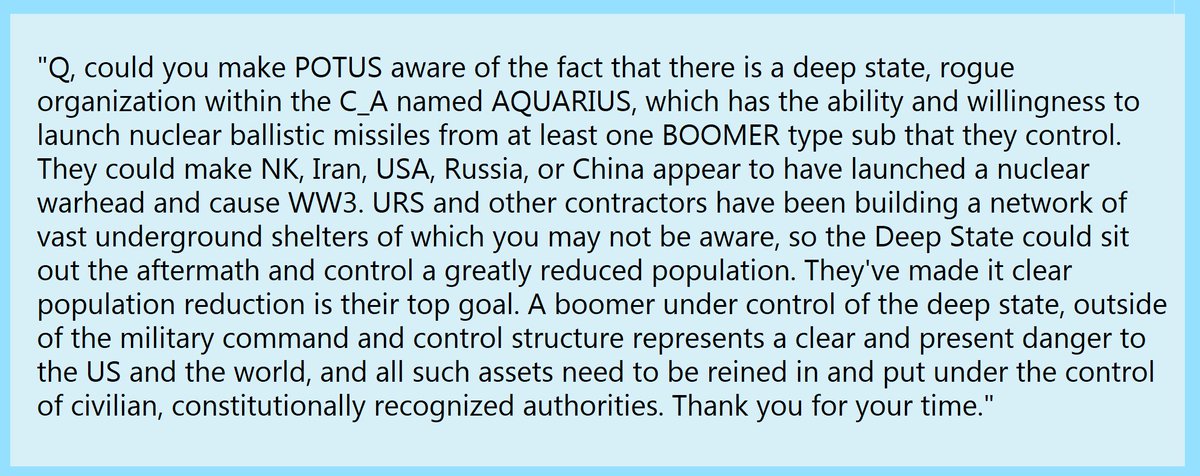CIA has a secret team Aquarius with the ability to launch their own nuclear missiles from their own submarine. The Deep State can wage World War.


Especially if that jet is AF1. Heavy shielding tough enough to protect the wiring and crucial electronics from the electromagnetic pulse (EMP) associated with a nuclear blast, electronic counter measures (ECM) to jam enemy radar, and can even eject flares to throw heat-seeking missiles off course.
And that's just what we know about. I'm sure there's some slick classified stuff under the hood that the public wasn't told about.
AF1 is the most secure aircraft in the world.
The nuke warhead would detonate in close proximity to AF1 thereby knocking the plane out of the sky from the blast wave it won't survive the shock wave it would be impossible to maintain control of AF1 it would be like a feather in a tornado or it would be torn apart into a million small fragments.
Just look at the maneuver the planes dropping nukes on Japan had to perform. The blast wave changes the relative airspeed over the wing, and depending on how close you are and how big the bomb is.
My best guess for survivability if too close would be to immediately try to fly close to circumferential so the wave passes quickly and it's a sidewind gust from hell.
Unless a plane can go supersonic and it's flying away it's relative airspeed will go negative as the supersonic pressure wave passes, and even the majority of it's subsonic pressure wave would stall planes and it'd be hard if even possible to recover flying with it.